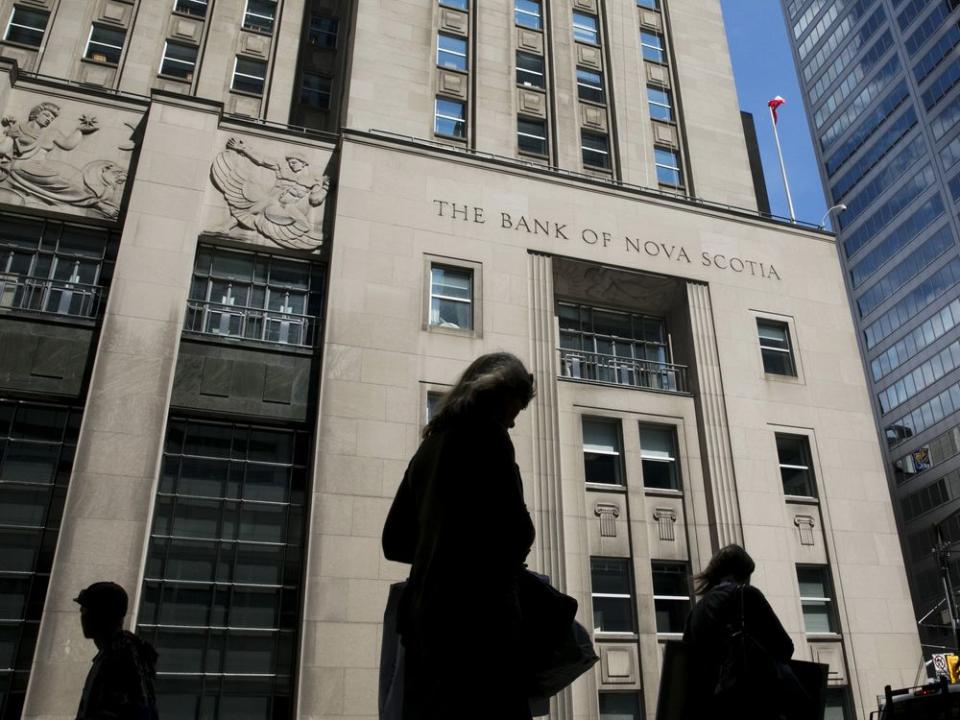John Turley-Ewart: Scotiabank bucks a trend again

As of Feb. 1, Scotiabank is again Bay Street’s odd man out as Scott Thomson, an experienced businessman but not an experienced banker, takes the helm of the 191-year-old bank.
Consider RBC CEO Dave McKay: 40 years at the Royal. CIBC’s Victor Dodig? He led that bank’s wealth management, asset management and retail banking businesses before becoming CEO in 2014. Over at TD, CEO Bharat Masrani has a 35-year banking track record. Brian Porter, whom Thomson replaces, spent 41 years at Scotia. Indeed, the last time Scotiabank tapped a businessman was in 1832, when wine merchant James Forman was asked to run the place as “cashier,” effectively general manager, and used it as his personal piggy bank until 1870, when it was learned he had a penchant, not only for wine but also for stealing sizeable sums from the bank — about half the bank’s capital, in fact.
Why then Thomson? Perhaps an explanation can be found in the bank’s recent and even distant past.
Scotiabank does have a reputation for independent thinking. The last time it was so obviously Bay Street’s outlier was the summer of 1998 when then-CEO Peter Godsoe argued against the proposed mega-mergers of RBC with BMO and TD with CIBC. He won a prized seat at Liberal rubber-chicken dinners as a result, as prime minister Jean Chrétien delighted in having drubbed the bankers and nixed their merger dreams.

When Scotia goes rogue it is almost never by happenstance, it’s purposeful. When Canadian Bankers’ Association members tried to limit competition in 1899 by fixing deposit rates Scotia refused to play along as it pursued market share and quit the association — the only bank ever to have done so. It only returned some years later.
Bank failures in the 1890s and 1900s saw Scotiabank, to the chagrin of other bankers, be the first to have its financial statements examined by external auditors with the explicit purpose of publishing them in the press. It also both publicly and privately urged the government to inspect banks, a demand Ottawa finally met in 1925. Bay Street-watchers criticized Scotia for these moves but stepping outside convention positioned it to build brand and successfully grow its business.
In the case of Thomson, his past may matter less than the mandate Scotiabank’s board envisions for him, which needs to include pivoting away from a culture that has allowed lapses in regulatory compliance.
The fate of its once shining precious metals business, ScotiaMocatta, is testament to those lapses. Scotiabank bought Mocatta Bullion in 1997, joining players such as Barclays, HSBC and Deutsche Bank in the world’s largest precious metals traders club. Less than 20 years later, however, it faced lawsuits alleging price fixing and probes by regulators that ultimately led the Justice Department to charge Scotiabank relating “to a price manipulation scheme involving thousands of episodes of unlawful trading activity by four traders in the precious metals futures contracts markets.” This process ended in August 2020 when Scotiabank entered a deferred prosecution agreement and admitted to the U.S. Justice Department “their role in a massive manipulation scheme aimed at falsely manufacturing the prices of precious metals futures contracts to serve the bank’s interests.”
Prior to that, in 2017, Scotiabank did business with the wrong client and found itself caught up in what the Financial Times characterized as a “multibillion dollar money laundering scandal.” Scotia was not itself accused of wrongdoing but had financed a corporate client with a subsidiary U.S. prosecutors said was laundering money with “billions of dollars of criminally derived gold.”
John Turley-Ewart: Sir John A.’s real banking goal: no bailouts
John Turley-Ewart: Once upon a time in Canada banking was like the Wild West
After all this, the bank exited its metals business, paid a $US60.4-million “criminal monetary payment” and retained “an independent compliance monitor for a period of three years” at the Justice Department’s insistence, one of the greatest indignities a bank could face — being forced to prove to an outside compliance monitor that it can operate within regulatory guidelines peer banks are assumed to accept automatically.
In December 2022 Scotia again was paying penalties for compliance lapses — this time $1 million to the Canadian Mutual Fund Dealers Association for not having in place the regulatory policies, procedures and training to prevent staff at its securities division from padding sales by recording client switches between investments as new sales or creating pre-authorized contribution plans clients did not in fact authorize.
Scott Thomson takes the reins of a bank with a long history at a moment when it needs to be steered toward a compliance culture that better protects shareholders and customers. Breaking clearly with the past was the formula used after James Forman’s looting of funds was discovered in 1870. His successor, William Menzies, was hired with instructions to “make necessary changes to the bank’s methods.” Thomson’s appointment may signal it is again time to “make necessary changes.”
John Turley-Ewart is a regulatory and compliance consultant, a Canadian financial historian and former associate editor of the Financial Post.

 Yahoo Finance
Yahoo Finance